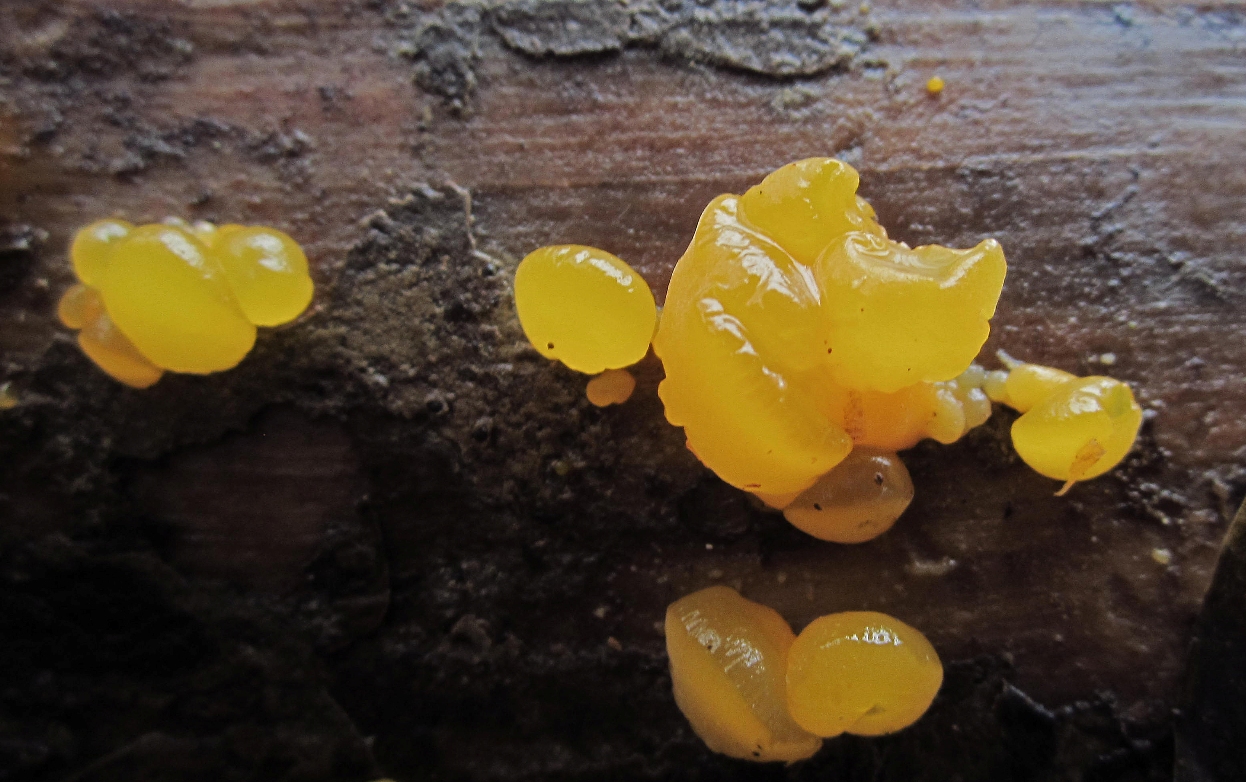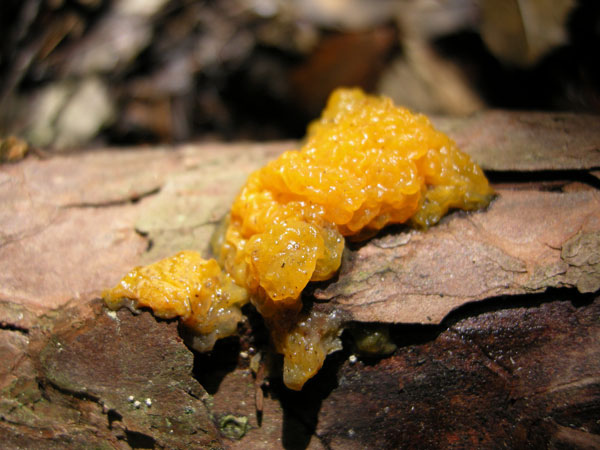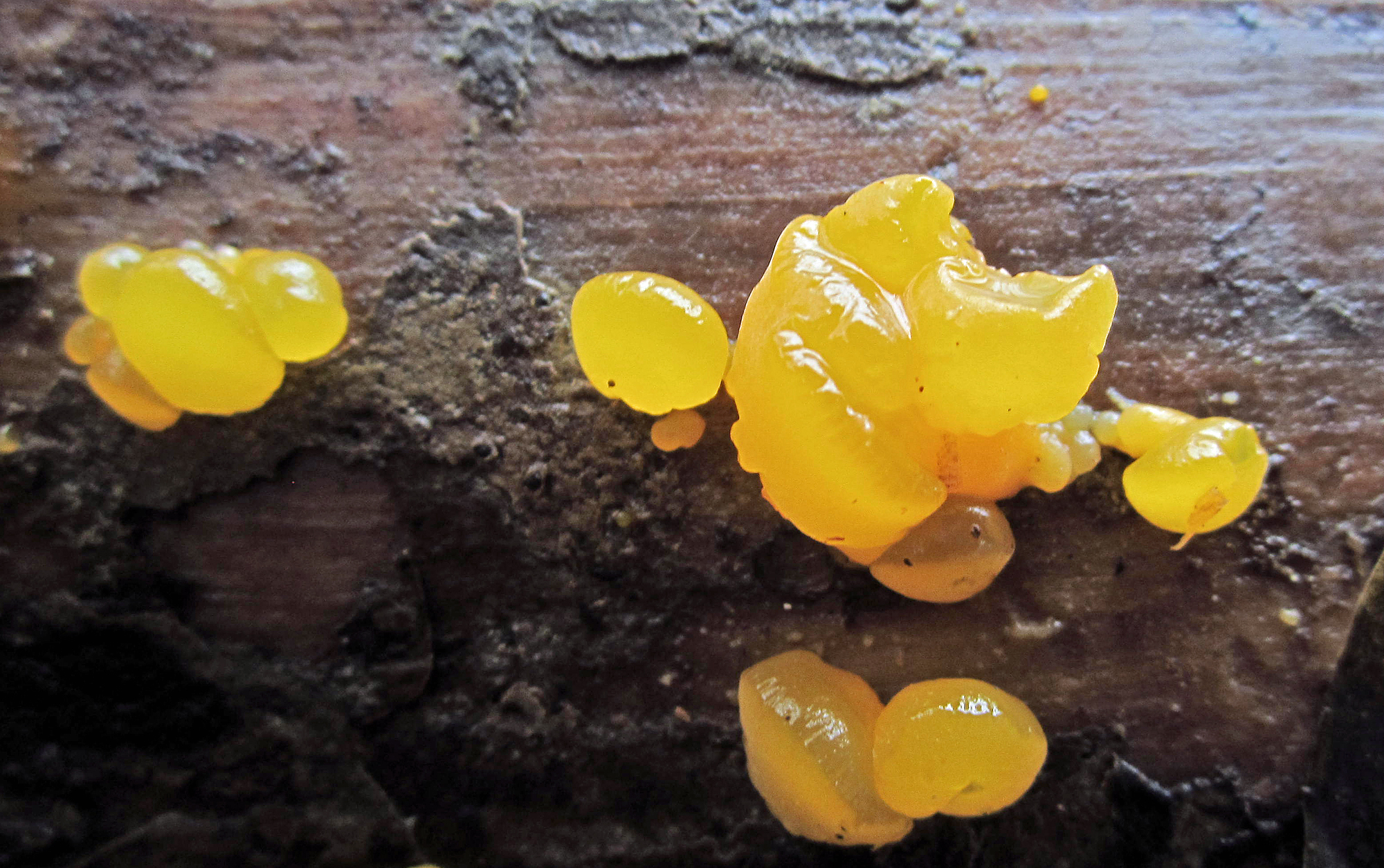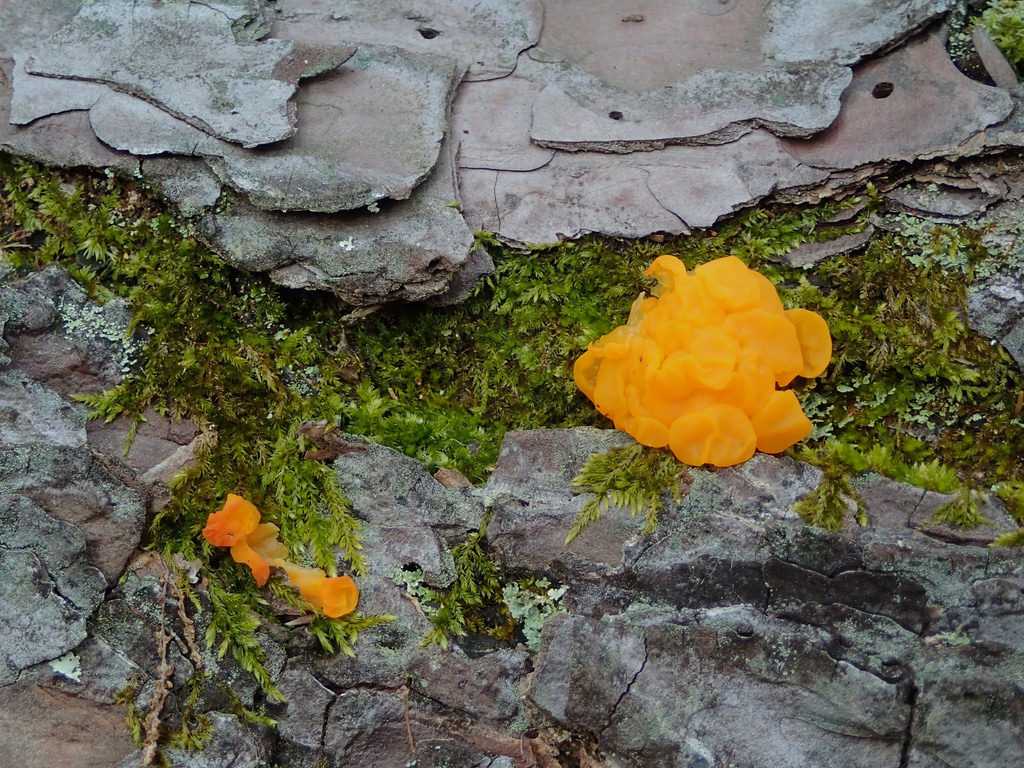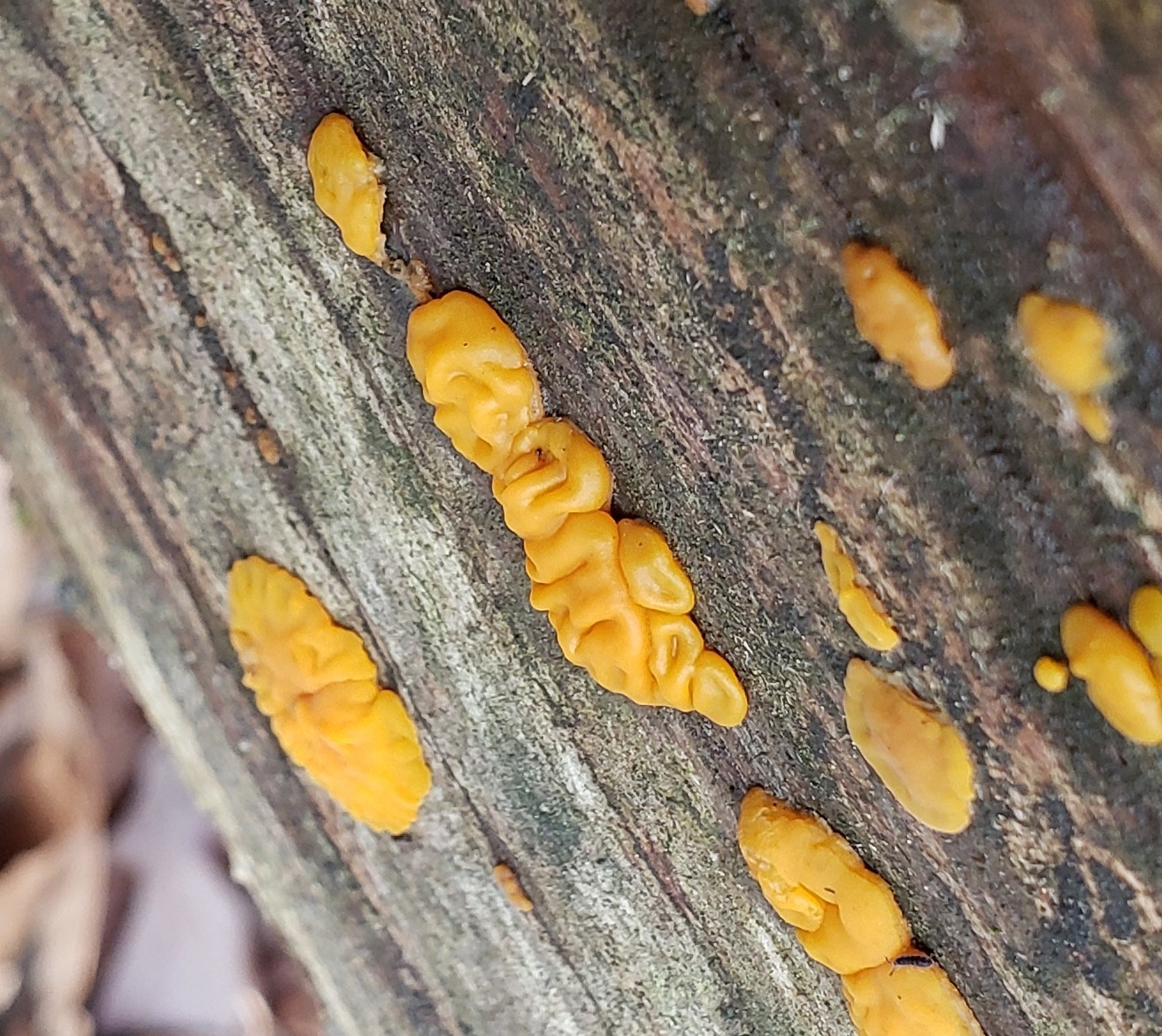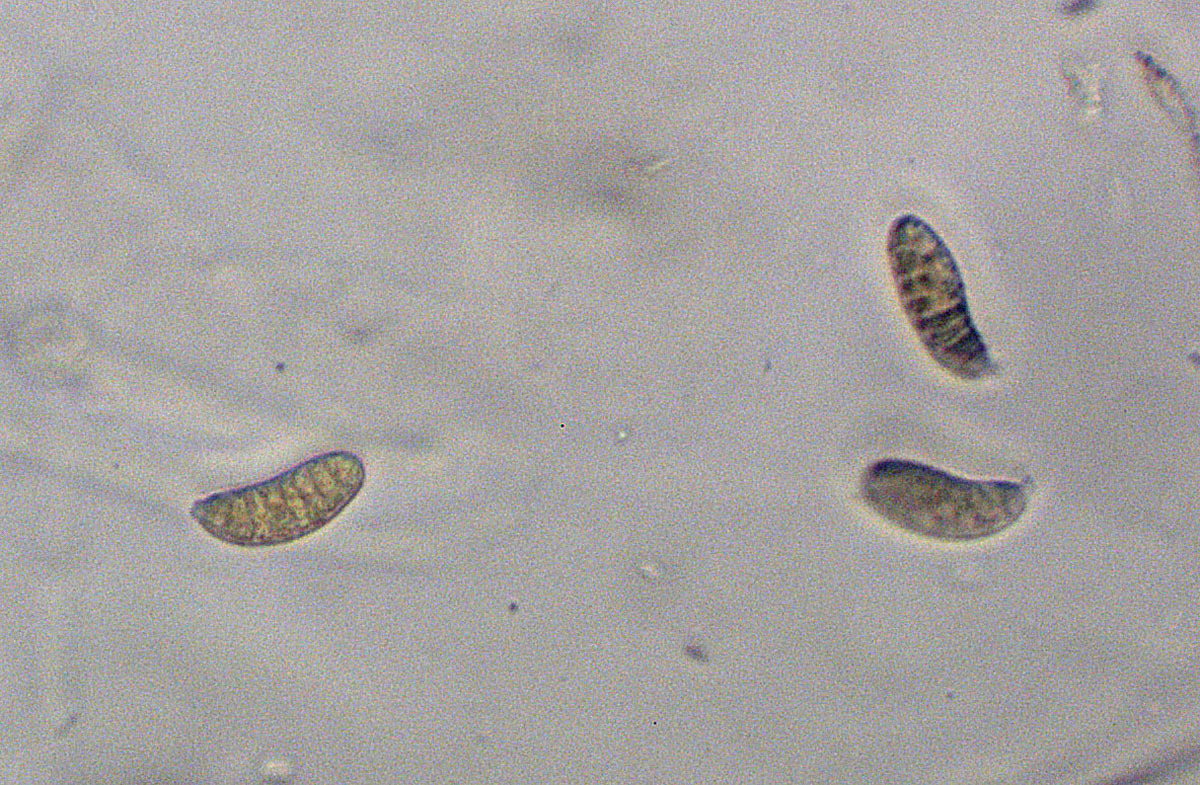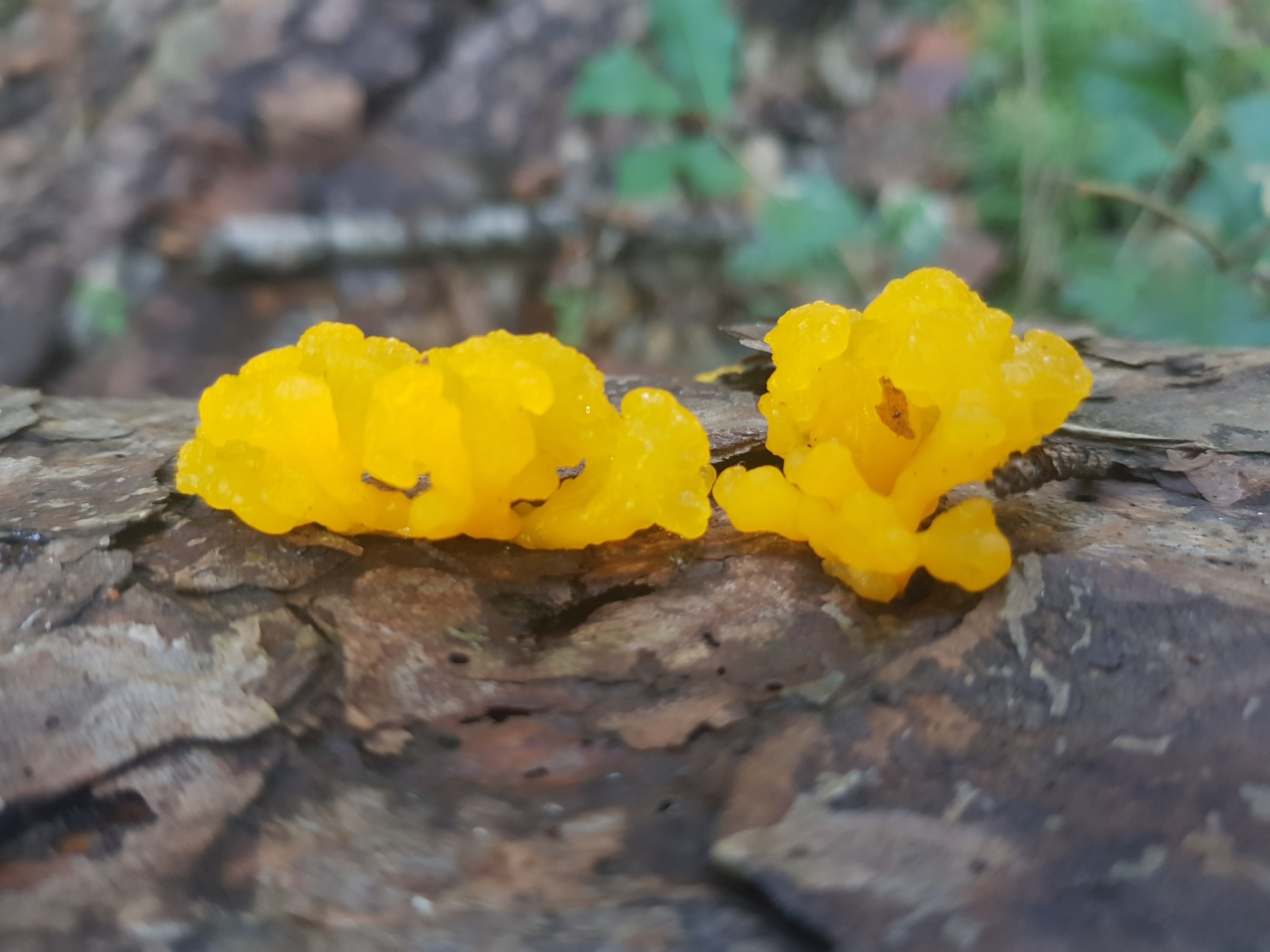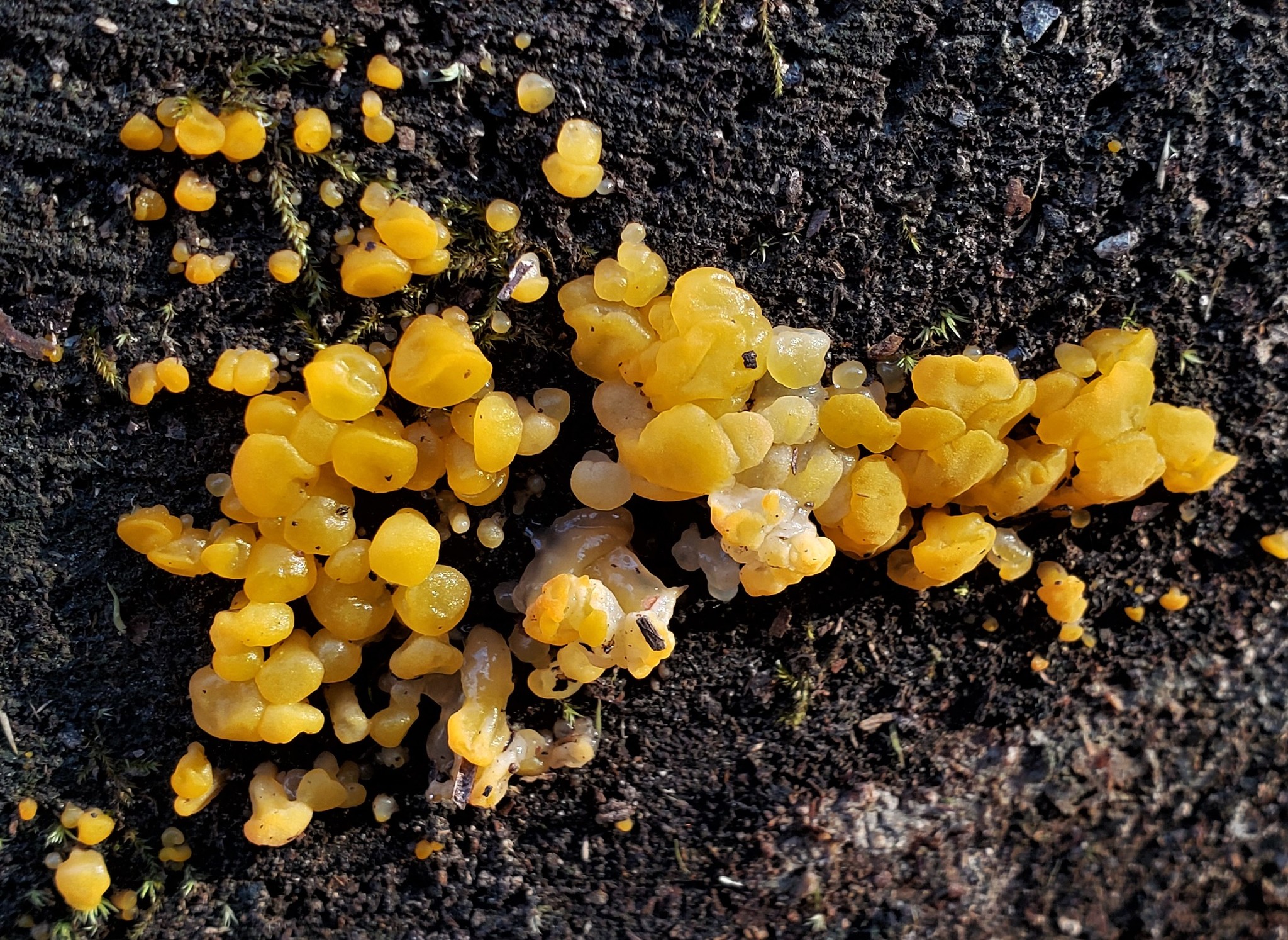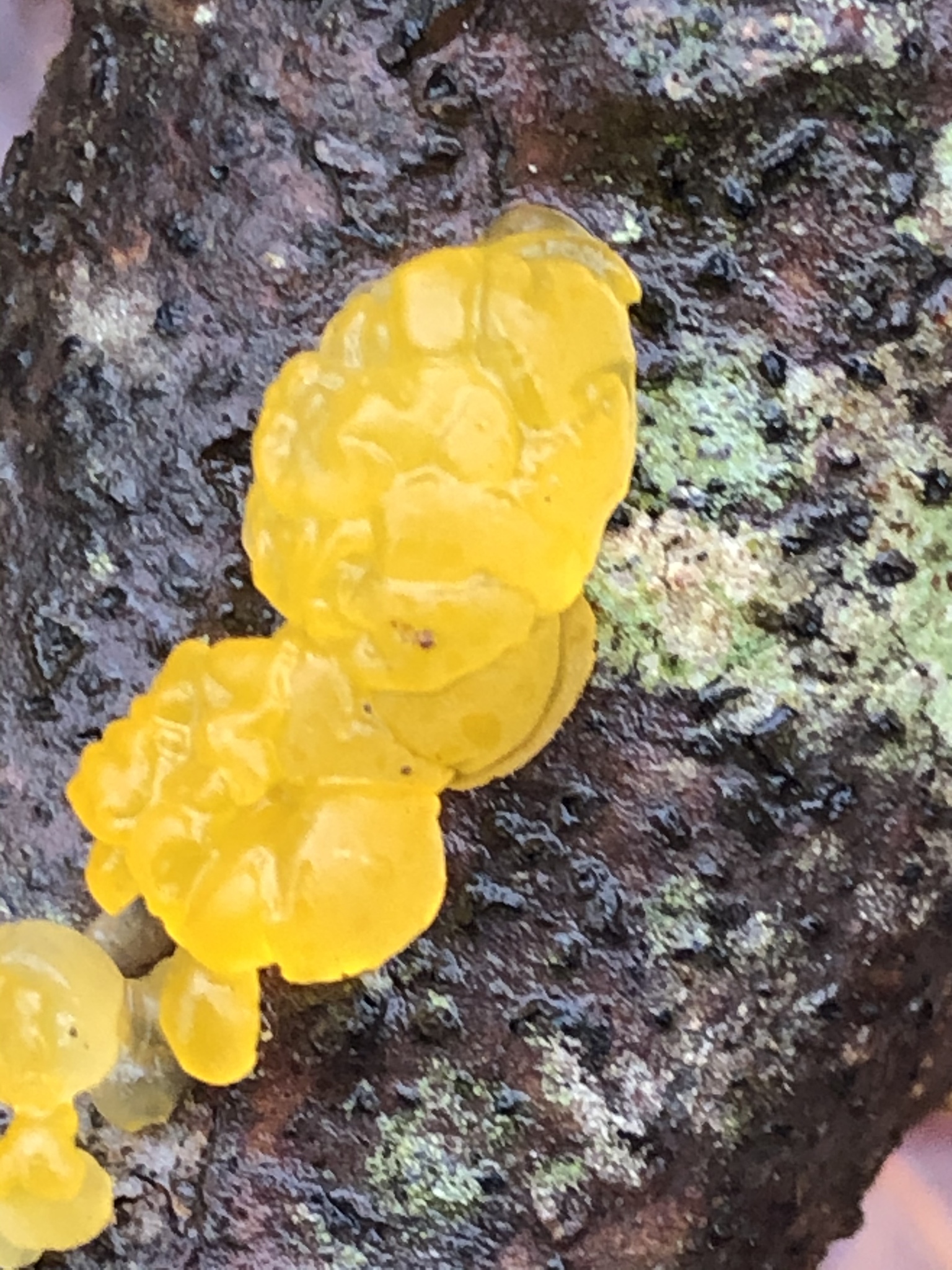Map Snapshot

















150 Records
Description
Fruiting body: Orange-yellow to reddish-orange; multi-lobed, irregular, spreading, gelatinous mass. Substrate identification is essential to separate this species from Witches Butter (Tremella mesenterica), which is found only on hardwoods.
Relationships
Found in dense clusters on decaying conifers, especially pines. (J. Solem, pers. comm.)
Seasonality Snapshot
Source: Wikipedia
| Dacrymyces chrysospermus | |
|---|---|

| |
| Dacrymyces chrysospermus, Ontario, Canada | |
| Scientific classification | |
| Domain: | Eukaryota |
| Kingdom: | Fungi |
| Division: | Basidiomycota |
| Class: | Dacrymycetes |
| Order: | Dacrymycetales |
| Family: | Dacrymycetaceae |
| Genus: | Dacrymyces |
| Species: | D. chrysospermus
|
| Binomial name | |
| Dacrymyces chrysospermus Berk. & M.A.Curtis (1873)
| |
| Synonyms | |
| |
Dacrymyces chrysospermus is a species of jelly fungus in the family Dacrymycetaceae. In the UK it has the recommended English name of orange jelly spot;[1] in North America it is known as orange jelly or orange witch's butter.[2]
Description
[edit]The species is saprotrophic and grows on dead coniferous wood. The basidiocarps are gelatinous, bright orange, and extremely variable in shape, but typically stoutly stipitate with a spoon- or cup-shaped, spore-bearing head. They are frequently erumpent in groups, often coalescing to form complex masses up to 6 cm (2+1⁄2 in) across.[3] Microscopically it is distinguished from most other species of Dacrymyces by its comparatively large (18–23 by 6.5–8 μm), 7-septate basidiospores.[3][4]
Similar species
[edit]Tremella mesenterica and Naematelia aurantia are macroscopically identical to D. chrysospermus but can easily be separated by their growth on hardwood as well as their microscopic characteristics. While looking so similar, they belong to a different class of fungi, Tremellomycetes.[5][6]

Dacryopinax spathularia and species of Femsjonia can also be similar.[7]
Distribution
[edit]Dacrymyces chrysospermus was originally described from New England, but is said to have a worldwide distribution.[3]
References
[edit]- ^ Holden L. (April 2022). "English names for fungi 2022". British Mycological Society. Retrieved 1 November 2022.
- ^ Emberger, Gary. "Dacrymyces chrysospermus". Fungi Growing on Wood. Messiah College Oakes Museum. Retrieved 1 November 2022.
- ^ a b c McNabb, RF (1973). "Taxonomic studies in the Dacrymycetaceae: VIII. Dacrymyces Nees ex Fries". New Zealand Journal of Botany. 11 (3): 461–524. doi:10.1080/0028825X.1973.10430296.
- ^ O'Reilly, Pat. "Dacrymyces chrysospermus". First Nature. Retrieved 1 November 2022.
- ^ Stevens, Michael Wood & Fred. "California Fungi: Dacrymyces chrysospermus". www.mykoweb.com. Retrieved 28 February 2024.
- ^ "Dacrymyces chrysospermus". www.messiah.edu. Retrieved 28 February 2024.
- ^ Audubon (2023). Mushrooms of North America. Knopf. p. 89. ISBN 978-0-593-31998-7.
